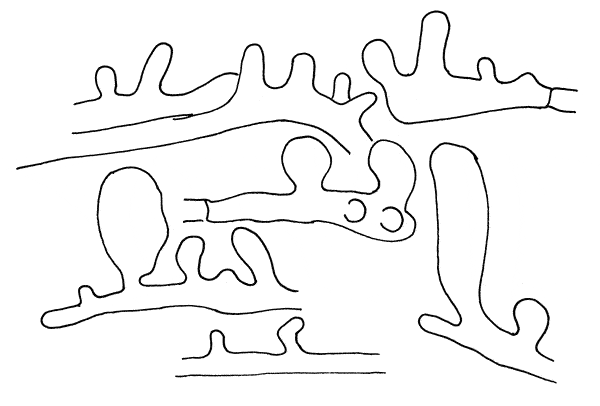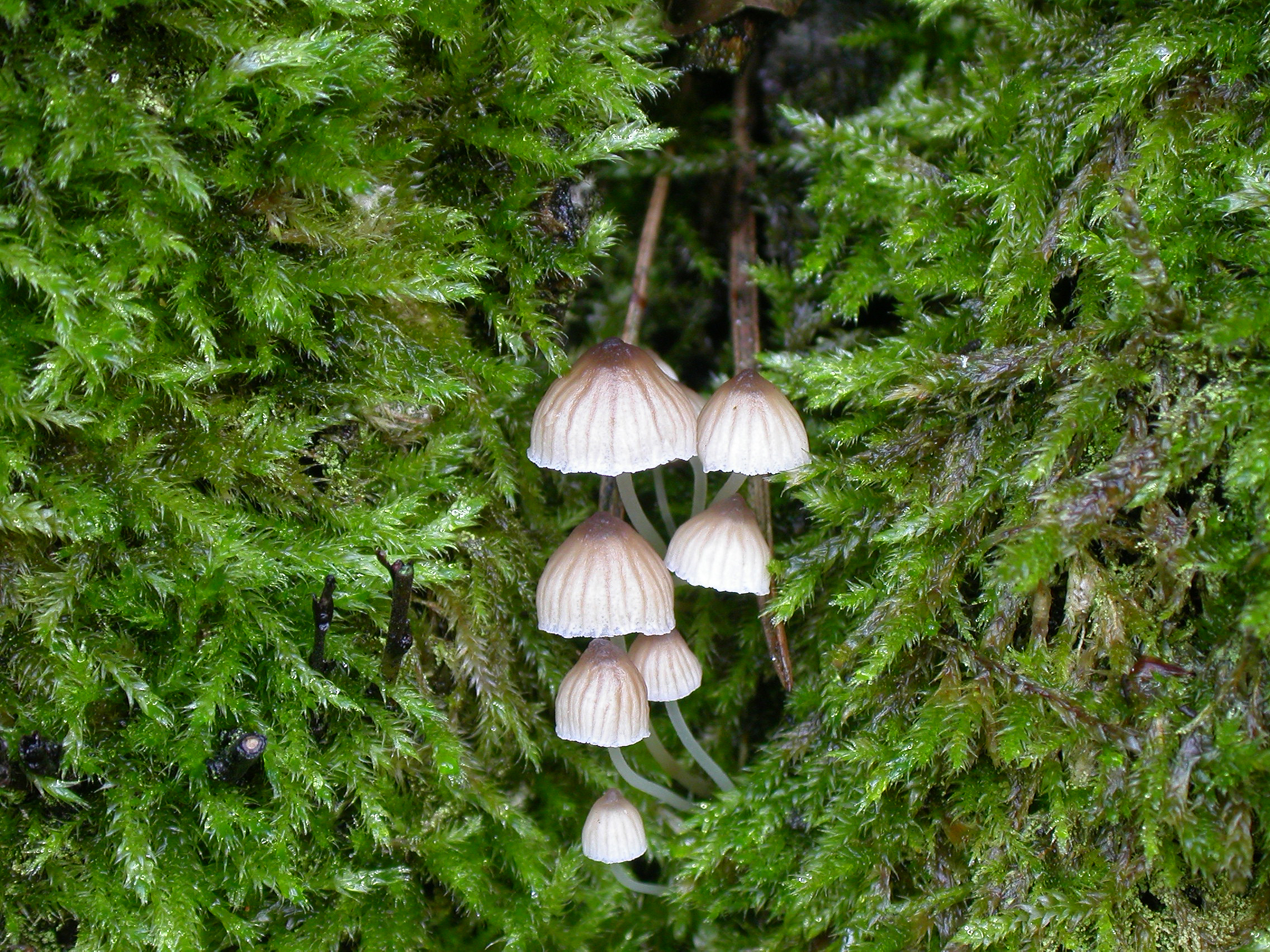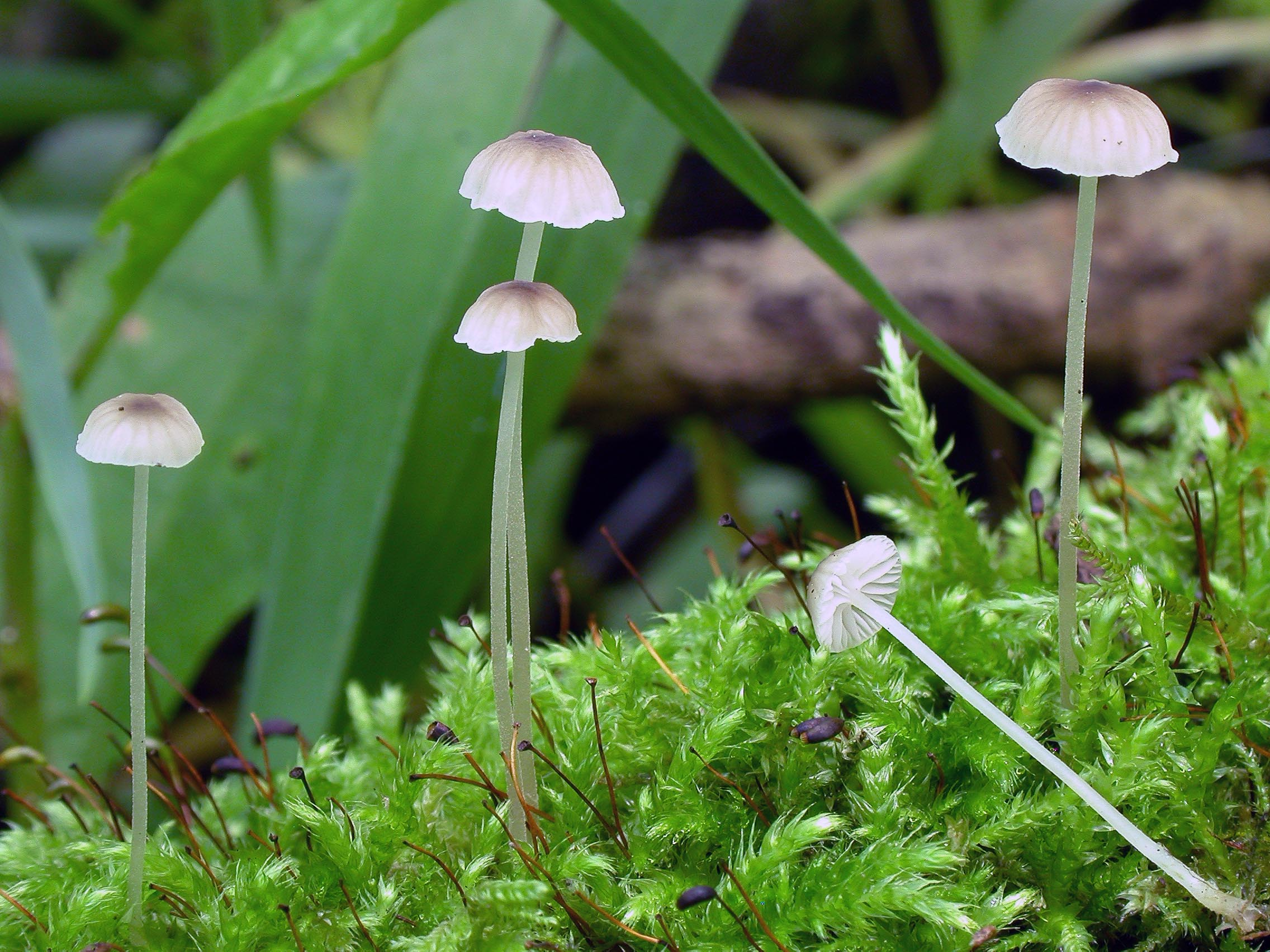Phloeomana alba
Phloeomana alba
Description
Hyphae of the pileipellis.
Cap 2- 10 mm across, hemispherical to convex or applanate with somewhat expanded margin, mostly with a depressed centre, but also with a small papilla, pruinose, glabrescent, sulcate, translucent-striate (disappearing when drying), at first white or beige, sometimes with a yellowish tinge in the centre, with age turning more brownish, dirty white, whitish-brown or pale brown with darker centre. Gills (6-) 9-15 reaching the stem, broad, arcuate to subhorizontal, the edge concave, broadly adnate, more or less decurrent, whitish. Stem 5-20 x 0.5-1 mm, more or less curved, equal or somewhat tapering downwards, minutely puberulous, towards the base often hirsute, whitish, with age turning brown from the base; the base covered with coarse, white fibrils. Odour none. Basidia 23-27 x 7-9 µm, clavate, 4-spored and clamped, or 2-spored and clampless. Spores (7-)8 -9(-11) x 6.5-8(-9.2) µm, Q = 1.0-1.2, Qav = 1.1, globose, smooth, non-amyloid. Cheilocystidia 17-34 x 5 - 10 µm, clavate to subcylindrical, clamped or clampless, somewhat curved to flexuous, apically broadly rounded. Pleurocystidia absent. Lamellar trama not vinescent in Melzer's reagent. Hyphae of the pileipellis 2.5-4.5 µm wide, clamped or clampless, smooth for the greater part, terminally covered with scattered, coarse, inflated, simple or broadly lobed excrescences 4.5-13.5 x 3-5 µm. Hyphae of the cortical layer of the stem 2-3 µm wide, smooth, clamped or clampless, terminal cells (caulocystidia) clavate to irregularly shaped, clamped or clampless, smooth to very coarsely diverticulate or lobed.
Ecology and distribution
On moss-covered trunks of deciduous trees. Autumn. Fairly common in southern parts of Norway.



